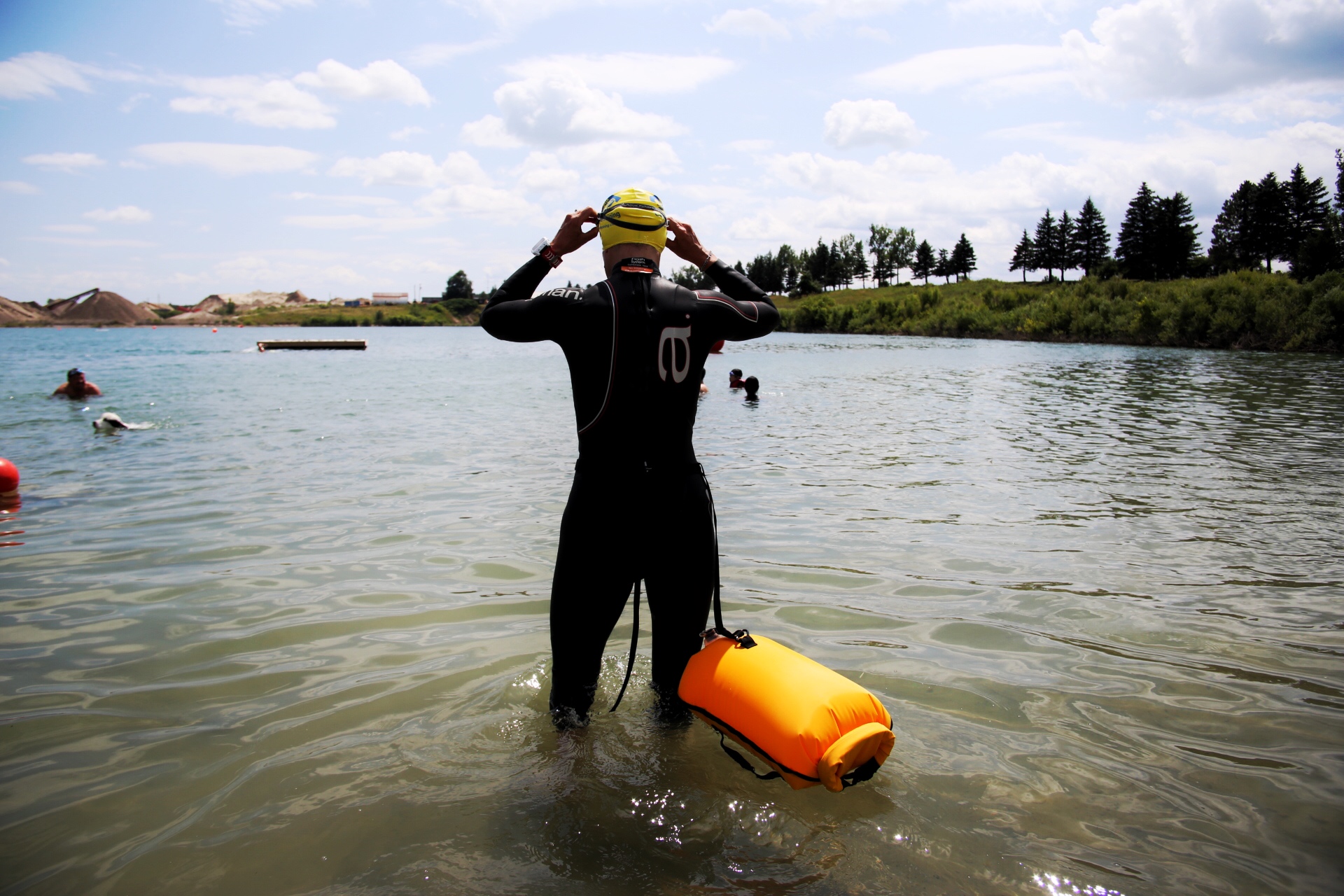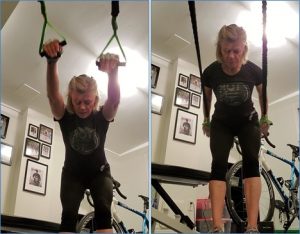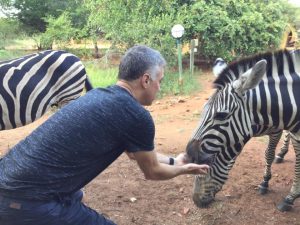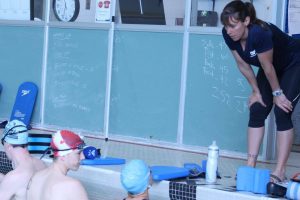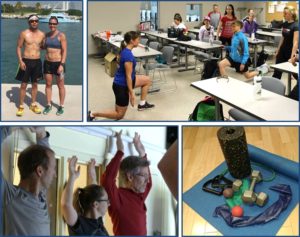In the ideal scenario: Missing out on a few months of swim training at the pool is sure to have had an effect on all triathletes this year, which means everyone is in the same boat. Fortunately, the dryland work you (should) have been doing during the off pool time will have helped to maintain your feel for the stroke, will have kept your rotator cuff muscles strong and balanced, and will allow you to build up your swimming a little faster than you could otherwise safely do. Extra focus on core strength during your time away from the pool will also have contributed to more strength and power in your stroke once you get your stroke back. Assuming you have maintained aerobic training throughout these last few months, you will have the aerobic fitness in you to swim – you will now just need to re-gain your feel for the water, get a handle on your swim technique, and build up your confidence and comfort in the water again. The weather has been great for warming up our local lakes and you may soon feel like you are ready to take the plunge and jump into open water swimming. However, be smart about heading out on your first few swims to allow your body to catch up with your enthusiasm.
In the less-than ideal scenario: You may not have been so diligent with your dryland training, core strength or your aerobic conditioning with what has gone on in your world during the pandemic. The mental adjustment we had to make across all facets of our lives during the past few months, and the disruption to our schedules might have resulted in taking your foot off the gas when it comes to your motivation and training. Maybe you did some of the work, but aren’t feeling so confident about getting that wetsuit on…if it still fits.
Also, it is important to recognize that many triathletes do not come from a swim background and are nervous in the water even with regular and consistent training throughout the year. Bring in open water swimming and the anxiety for many athletes can be high. This year most of us in North America have been forced out of the pool since mid-March and have not had an opportunity to swim at all. The prospect of starting back into open water can be even more intimidating without fitness confidence from the pool.
Here are a few ways to approach your swim training this year, assuming you are going right into the open water without having a chance to train in the pool (or at all!) over the last few months.
- Safety first. Don’t go it alone – have someone watching out for you, especially if you tend to be anxious in open water swim situations. Swimming is an individual sport and it is possible to go with a friend, or even a small group if following the rules for numbers allowed for gatherings in your location, and still abide by physical distancing guidelines.
- Check your gear. Check the condition of your wetsuit, goggles, swim cap. It has been sitting around for a while and you don’t need technical failures to complicate things.
- Soak your wetsuit. Before your first swim, soak your wetsuit in the tub a few times and let it dry out in between soakings to loosen it up and allow it to be more flexible – this will make your movements and breathing feel less restricted and should help you feel more comfortable. Check for damage and repair tears with glue. Then – try it on to make sure it still fits, and that you remember how to put it on correctly.
- Ease into the water slowly. Plan for enough time to allow you to get into the water and get comfortable with the temperature and your gear before heading out on your swim. Cold water causes an involuntary reaction that can translate into shortness of breath and anxiety. By giving yourself enough time to get acclimatized, you stand a better chance of being able to start swimming without having panic attacks 150 meters out.
- Warm up. Getting your heartrate up by doing some dryland exercises and a gradual swim warm up in advance of your actual workout can really help you avoid the feeling of panic when it starts to go up from the effort of swimming. Do a short run, arm swings, jumping jacks, or water running and a few short sprints in the water while you remain calm, close to shore, and acclimatize.
- Do a few shorter out-and-back swims instead of going straight into a 2000 meter workout. Take a break in between to re-set and think about what you are doing with your breathing, stroke and sighting. It’s more important at this point to re-establish good habits than to accomplish time or distance. Your swim fitness will come with practice, but your initial goal should be to get comfortable in the water, learn to relax, and practice a perfect stroke.
- Join a group. Find a smaller group who offer some company and support appropriate to your current level of ability and comfort. Stronger swimmers will regain their confidence and ability quickly, and don’t want to be held back. Less confident swimmers will appreciate the pace and encouragement of a similar group without unnecessary pressure. (CL Performance Training offers coached open water swim sessions that meet the needs of athletes at all levels. See below)
- Have fun. Athletes are driven by different reasons. For some, it’s about the competition. For some, it’s more social. And for others, it’s about personal achievement. Regardless of what drives you, in the end, if it wasn’t your version of fun, there isn’t much point in doing it. Take some time to think about what getting in the water this season is going to do for you and why you want to do it. Appreciate the positives and have them at the forefront of your mind. Taking a year off of swimming is going to make it harder to get back to it next season than it is from taking a couple of months off. Whether you have an upcoming race that is going to happen this year or not, working on your swim should be a long term plan. Commit to working on it to better yourself for future events – if not just to be fit and feel good!
CLPT will be offering open water swim sessions starting in July through to the end of August
Sundays 1:00 pm in Toronto (Cherry Beach)
Fridays 7:00 am in Burlington (tentative location is Burlington Beach)
Cost for 9 weeks is $72.00 + HST ($8/session) for either Toronto or Burlington.
Drop-ins, if available, will be $10/swim (availability of this depends on number of sign-ups for the program and limits on numbers for gatherings; advance notice with the coach will be required to ensure numbers meeting public health guidelines)
To register or get more information, click here or email cindy@clperformancetraining.com
